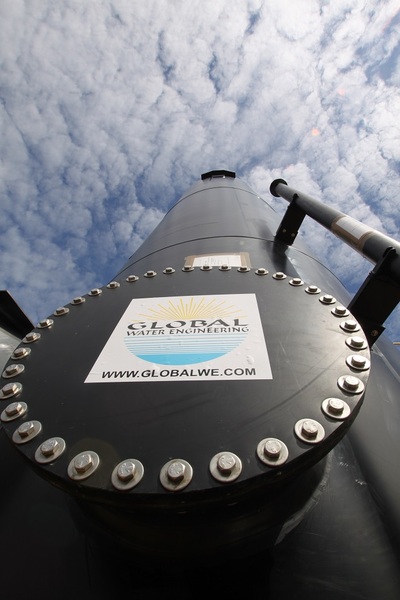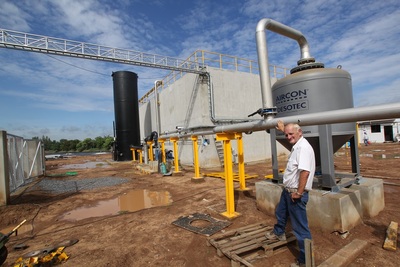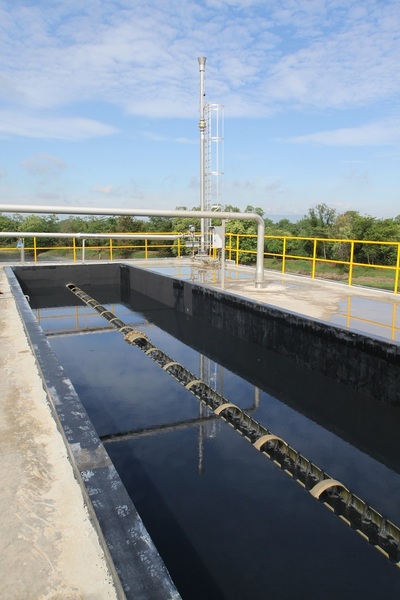Turning wastewater into green energy
Tuesday, 16 July, 2013
Sugar cane, the world’s largest crop, is grown in more than 90 countries with a worldwide harvest of more than1.6 billion tonnes annually. Historically, the crop has not been deemed suitable for biogas production because the large quantities of water used in its processing are too weak in their organic carbon concentration to yield profitable amounts of methane.
However, Global Water Engineering, which is represented in Australasia by CST Wastewater Solutions, says the industry has progressively reduced the amount of water it uses, increasing its waste stream concentrations to levels where it can successfully be used for biogas. Another bonus is that less effluent pollution is produced, through using the latest anaerobic technologies.
“Use of less water can produce major environmental benefits in the cane industry, where the size of a processing plant bears little relation to the huge amount of wastewater it has traditionally produced,” said GWE President and CEO Jean Pierre Ombregt.

“We are now getting towards the stage where, instead of having a series of huge anaerobic and aerobic lagoons impacting the environment, we can treat the effluent in contained anaerobic reactors where biogas is extracted and influent wastewater is cleaned of most of its impurities without release to the environment.”
GWE has installed more than 300 anaerobic wastewater plants globally. In some installations, the biogas is used to generate green energy for sale to the local grid or to other factories or plants consuming fossil fuels. Using biogas in this way can ensure payback of plant costs in as little as one to two years.
The United Farmer and Industry cane sugar mill at Khon Kaen in Thailand is one of the latest mills to use GWE Anaerobic technology. The plant has a capacity of 3500 m3 a day of wastewater, containing 22,750 kg per day COD (chemical oxygen demand) of natural origin that can be broken down into biogas by anaerobic bacteria.

The process employed at United Farmer and Industry comprises influent screen, equalisation, pH control, anaerobic treatment, biogas flare, two-stage biogas sweetening (Bio-Sulfurix followed by activated carbon filtration).
At the plant, biogas production is building to 9000 Nm3 a day (75% CH4), which will be used as fuel in several factory steam boilers. Wastewater effluent levels have also improved, with a minimum of 85% removal of COD being achieved, to a maximum 975 mg/L COD, produced from influent with 6500 mg/L, or 3250 mg/L BOD (biochemical oxygen demand).
GWE’s ANUBIX B medium-to-high loading rate UASB (upflow anaerobic sludge bed) reactor employed at the plant is of a type used for most low-to-medium strength mainly soluble carbohydrate containing effluents.
By cane industry standards, the effluent COD reduction achieved at United Farmer and Industry is outstanding. In other food and beverage industry applications, the technology has attained COD removal efficiencies of up to 99%.

“In addition to substantial environmental benefit from cleaner water being treated in reactor tanks rather than lagoons, the United Farmers Plant achieves a supply of green energy that delivers energy savings virtually in perpetuity,” Ombregt said.
Anaerobic reactors like those used at United Farmer and Industry reduce the need for huge lagoons - and their associated odour, land use and environmental issues.
This technology is applicable to any factory or process with one or more digestible solid waste streams. Such plants - including breweries, fruit, food waste, agro industries and energy crops such as corn and cane used for ethanol - can easily use this technology to generate energy. It opens the door to environmental and production efficiency gains globally, GWE says.
As a result of their efficiency, anaerobic digestion facilities have been recognised by the United Nations Development program as one of the most useful decentralised sources of energy supply, as they are less capital intensive than large power plants. They can also benefit local communities by providing local energy supplies and eliminating the need for large - and often smelly and environmentally dubious - settling lagoons.
Turning sustainability into an advantage in food and beverage
Nearly half of all Australian shoppers are influenced by sustainability when making purchases,...
The 'flour effect' pathway to Scope 3 emission cuts
An Australian Study reveals how a simple ingredient could become a climate solution for food...
Whey to go up: unlocking further potential for cheese by-product
A new mixed-method study explored four models that could provide potential for the Australian...








